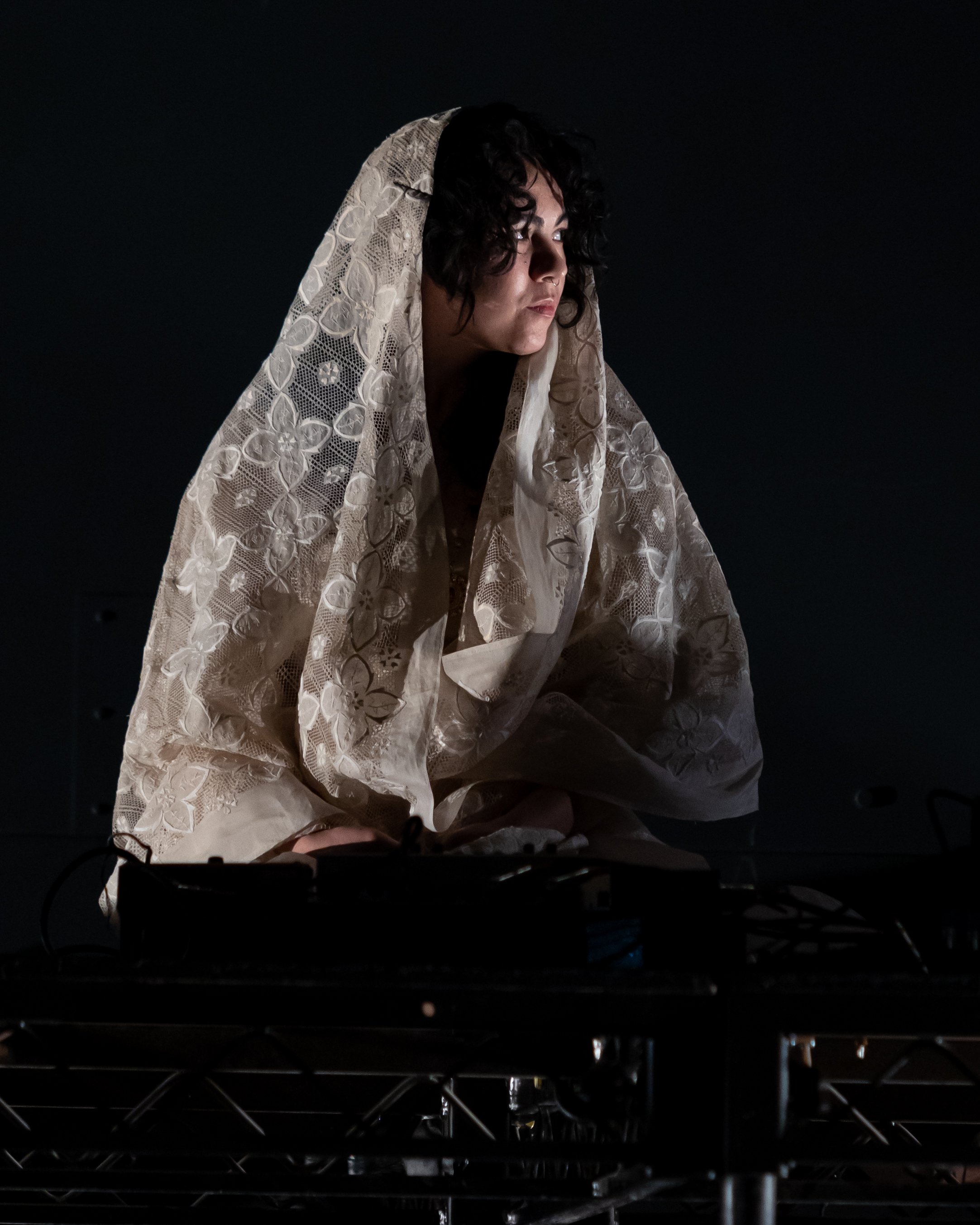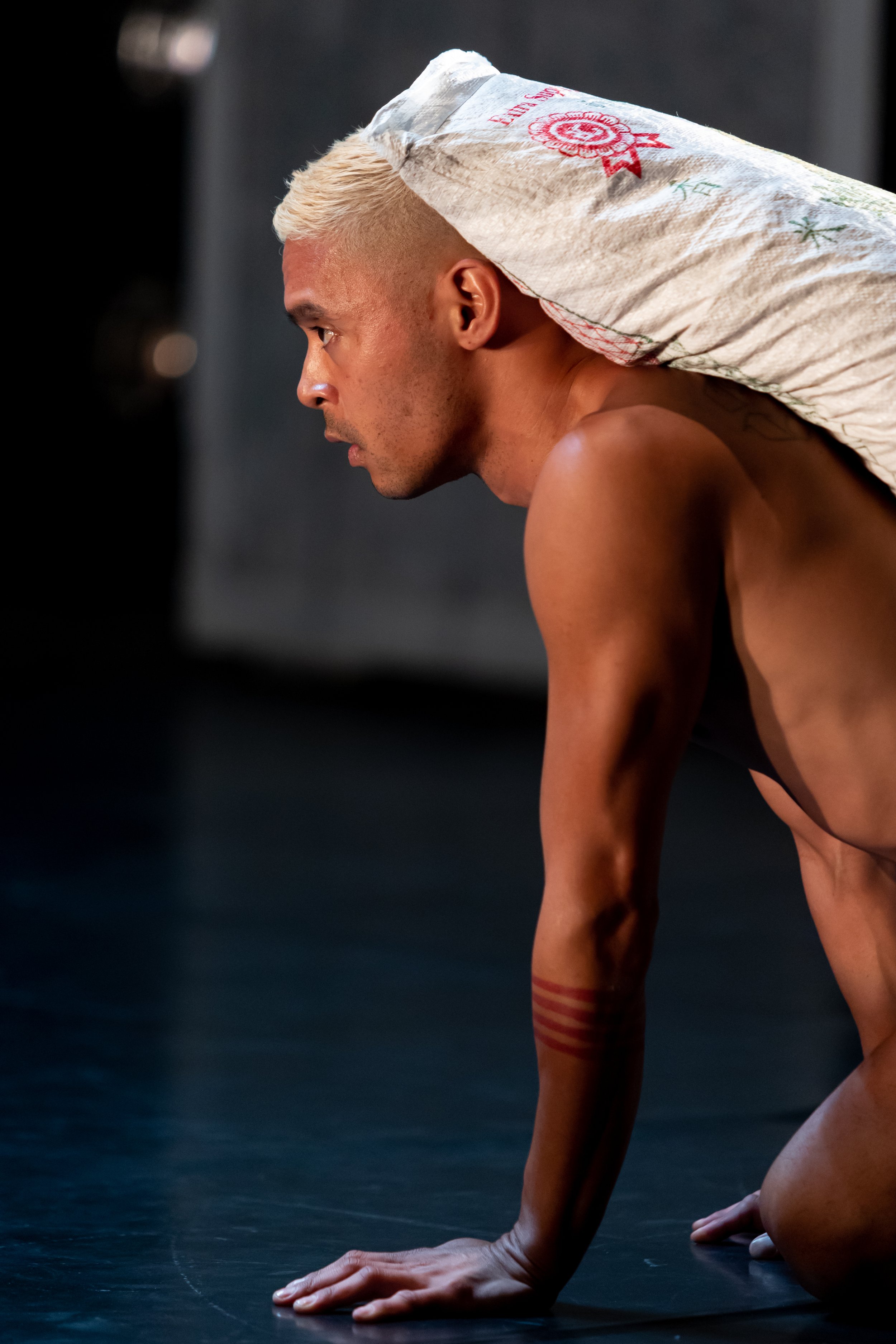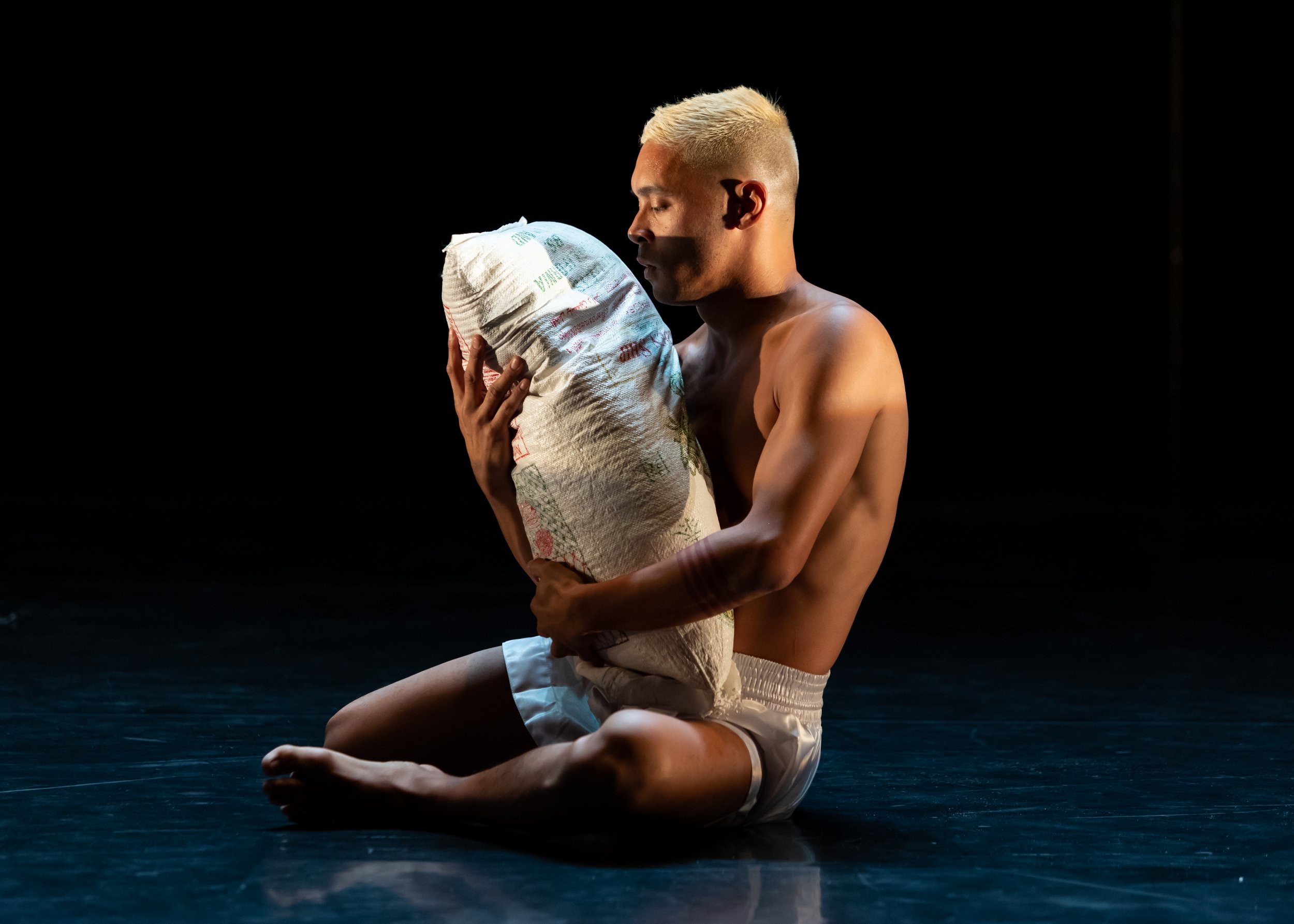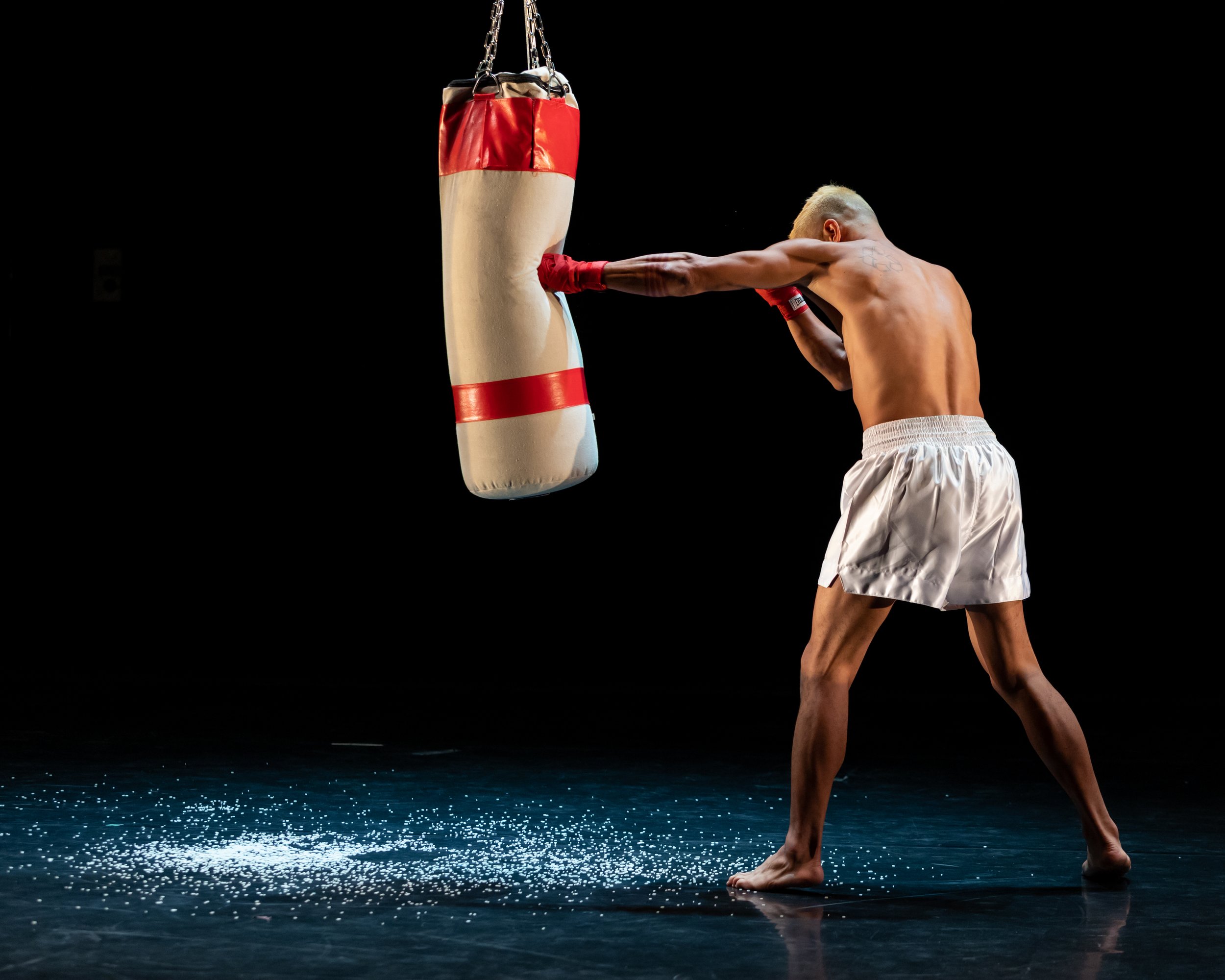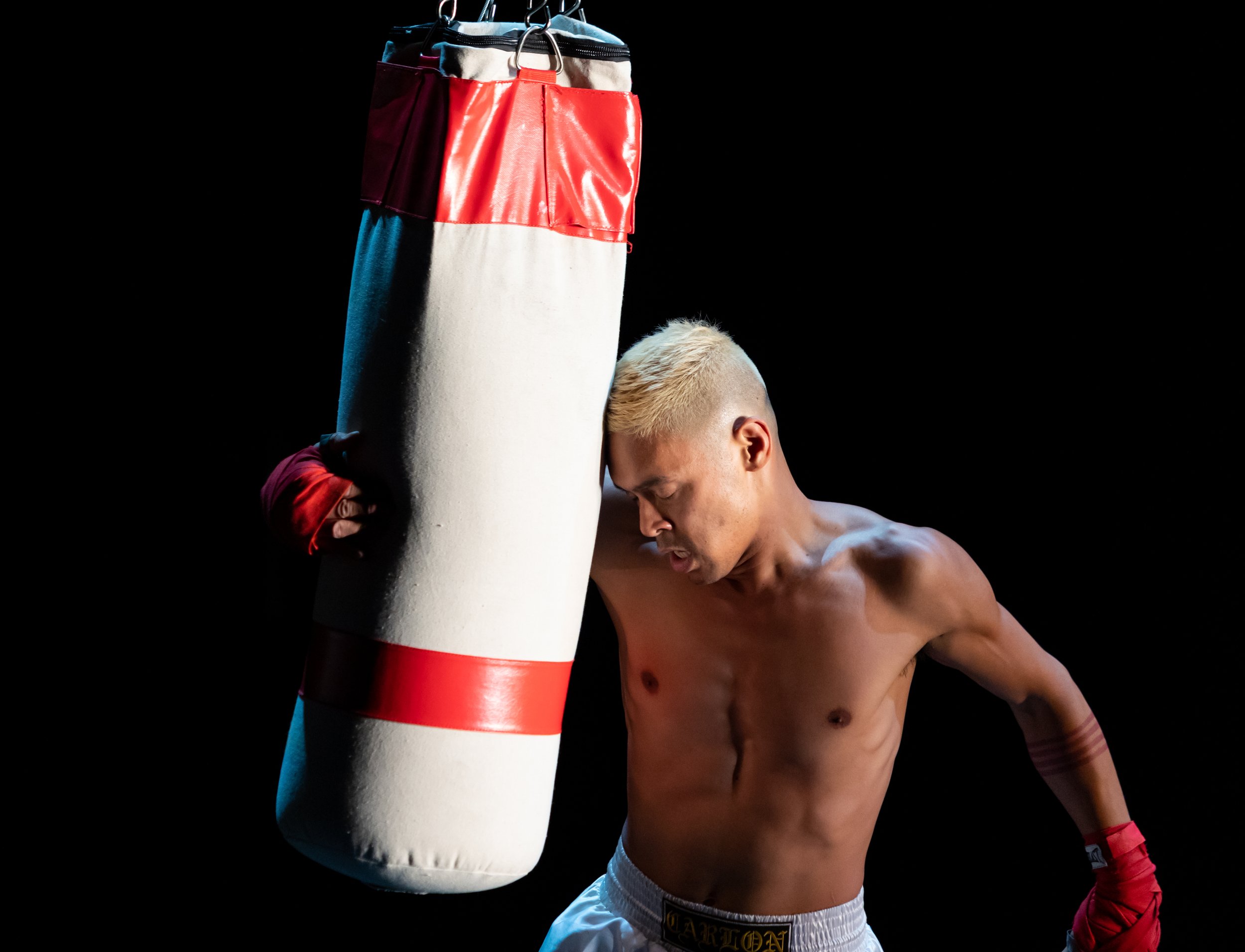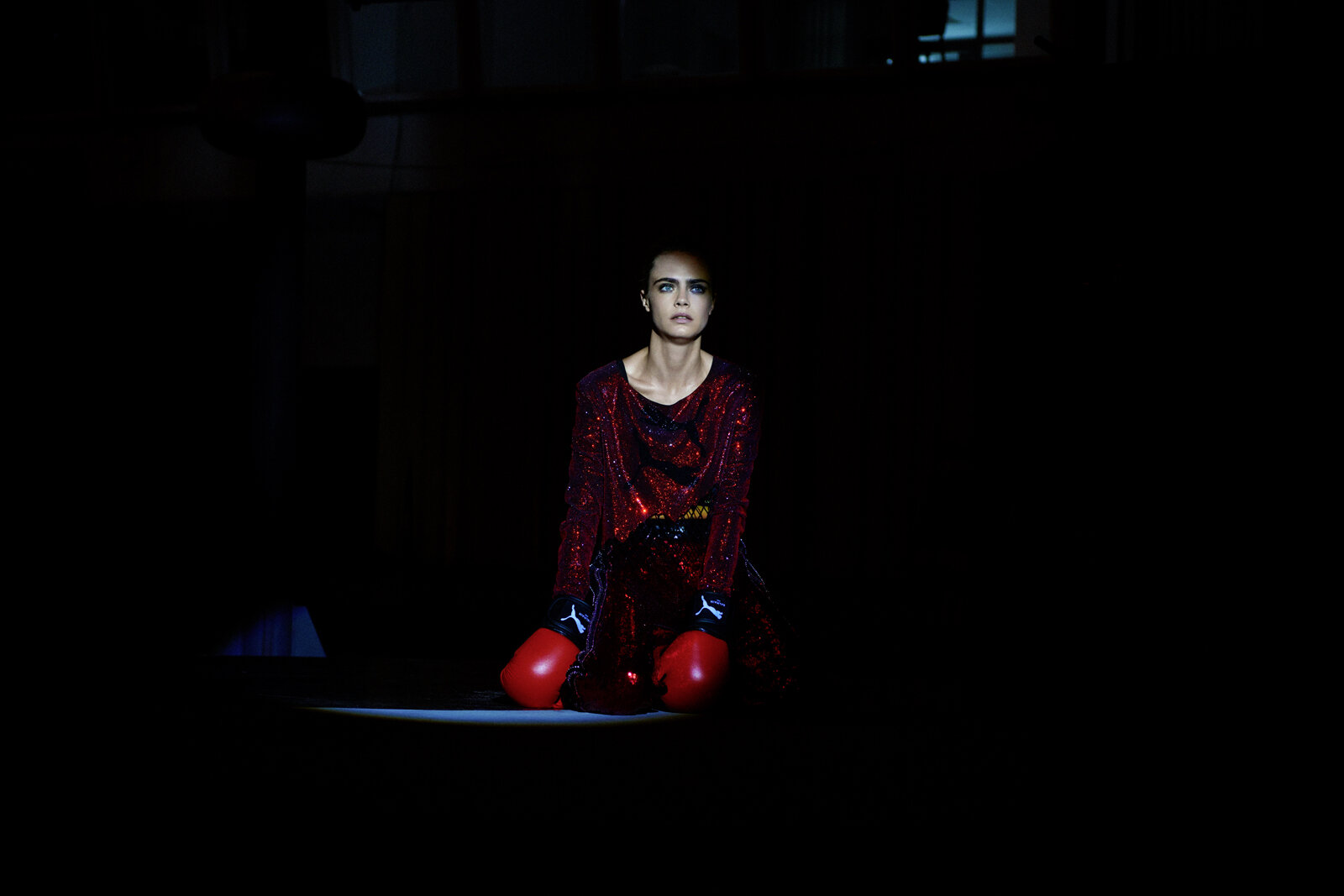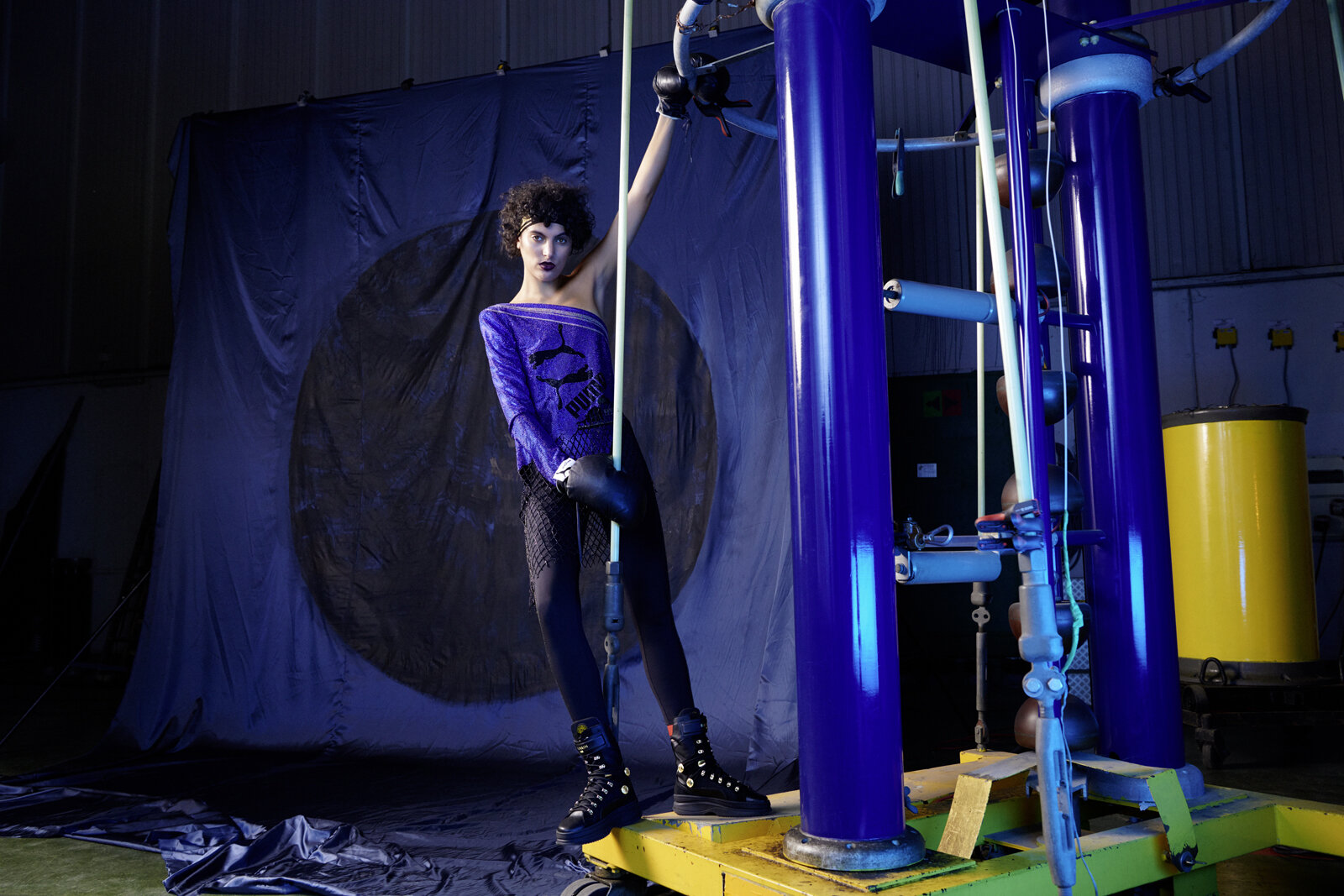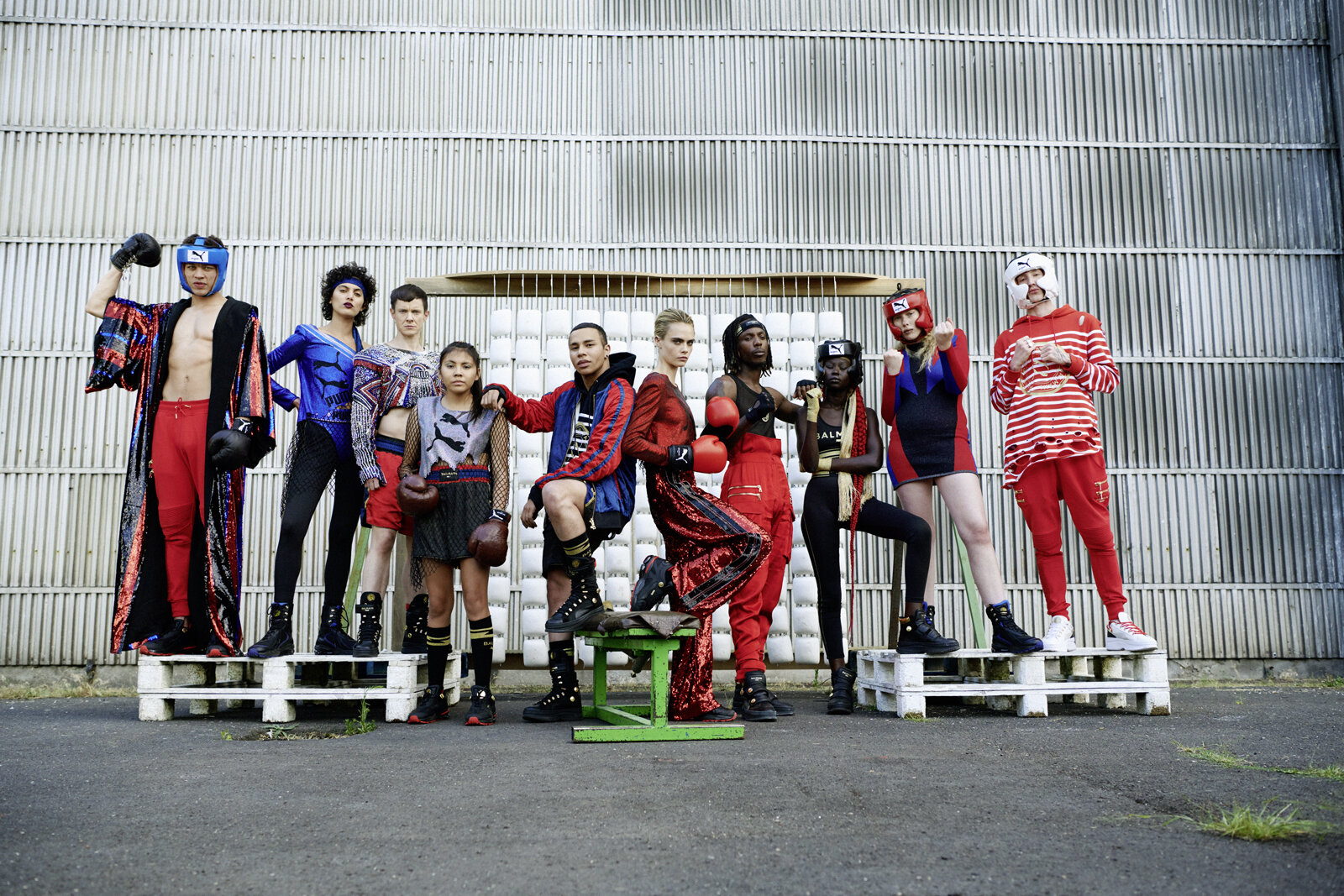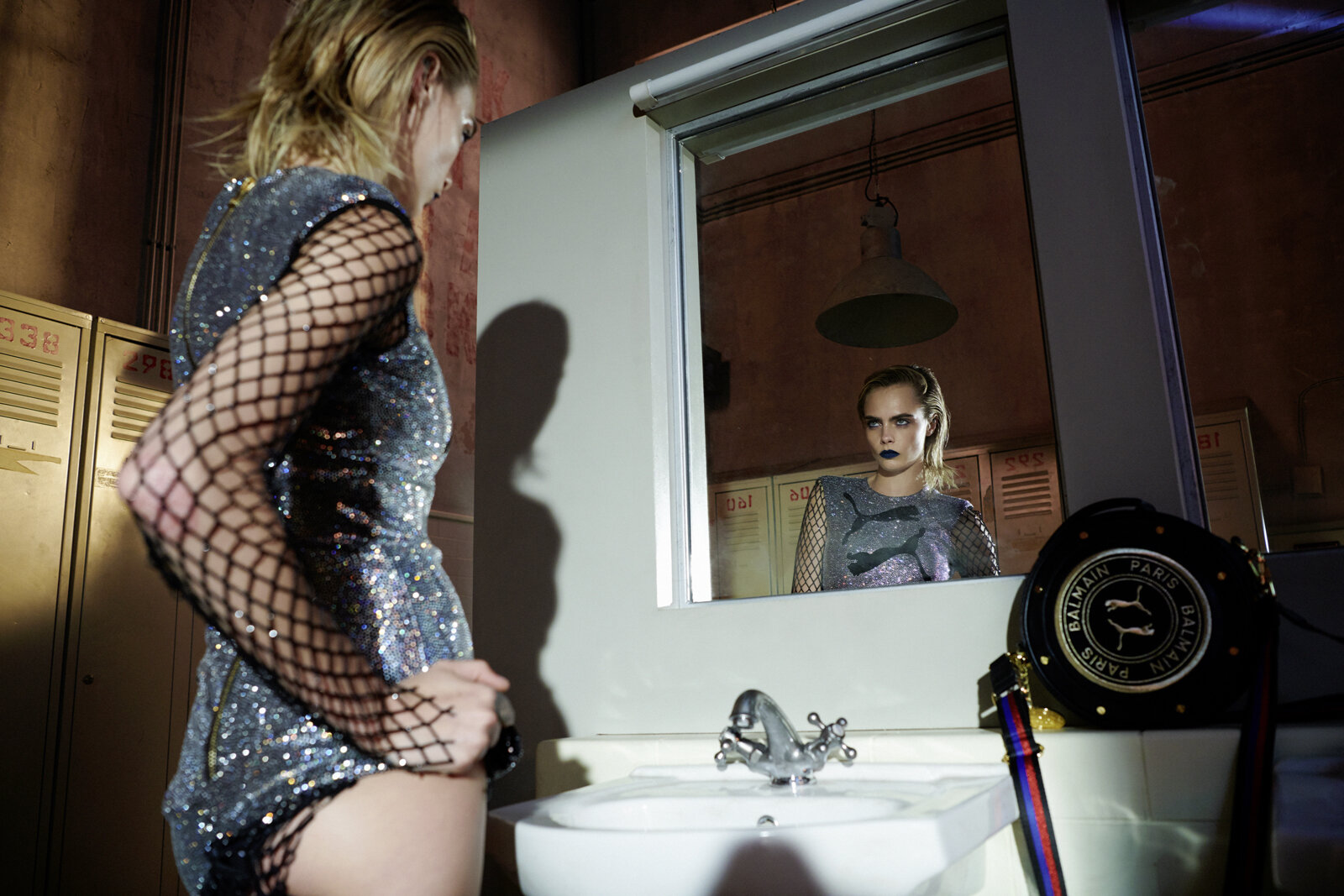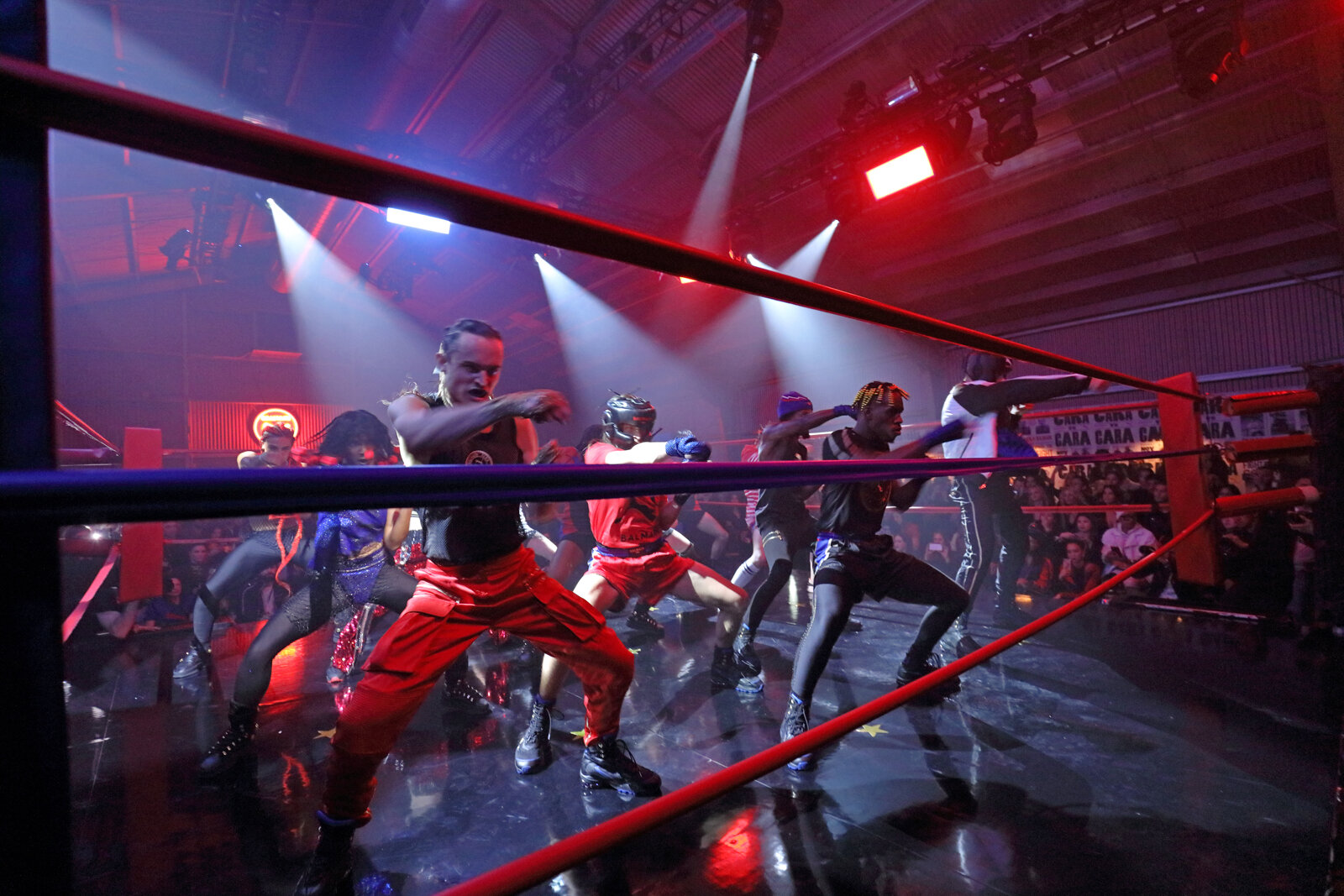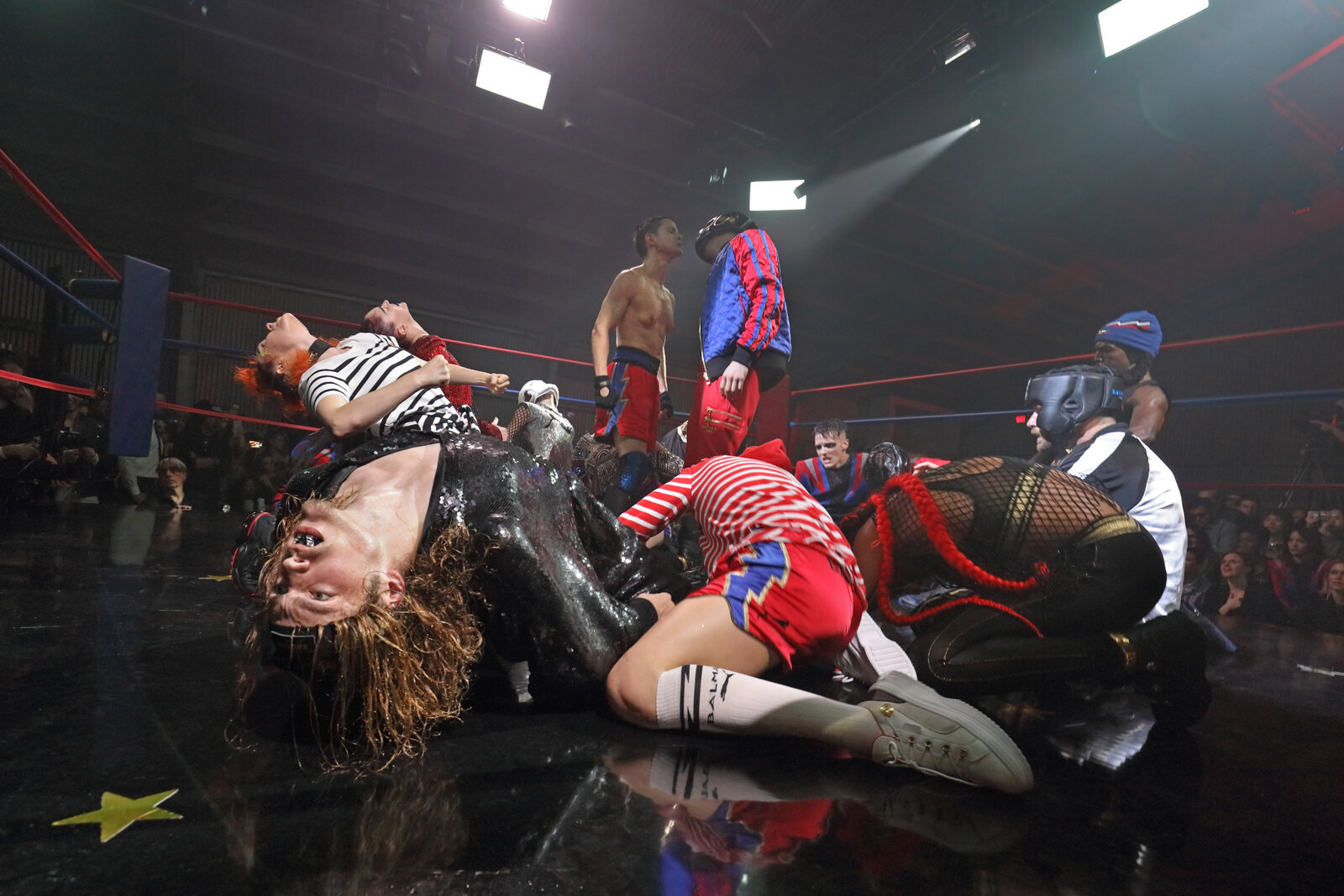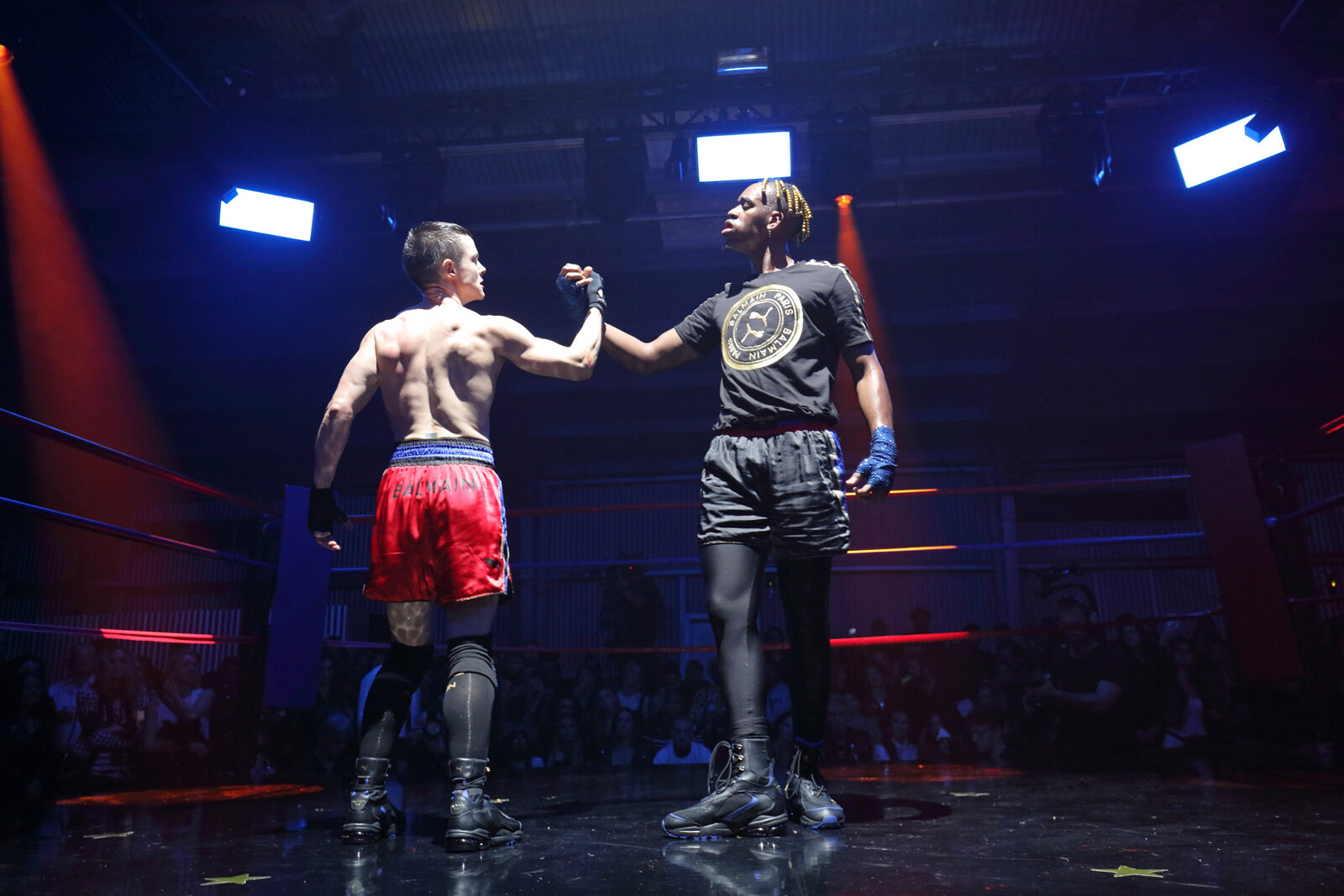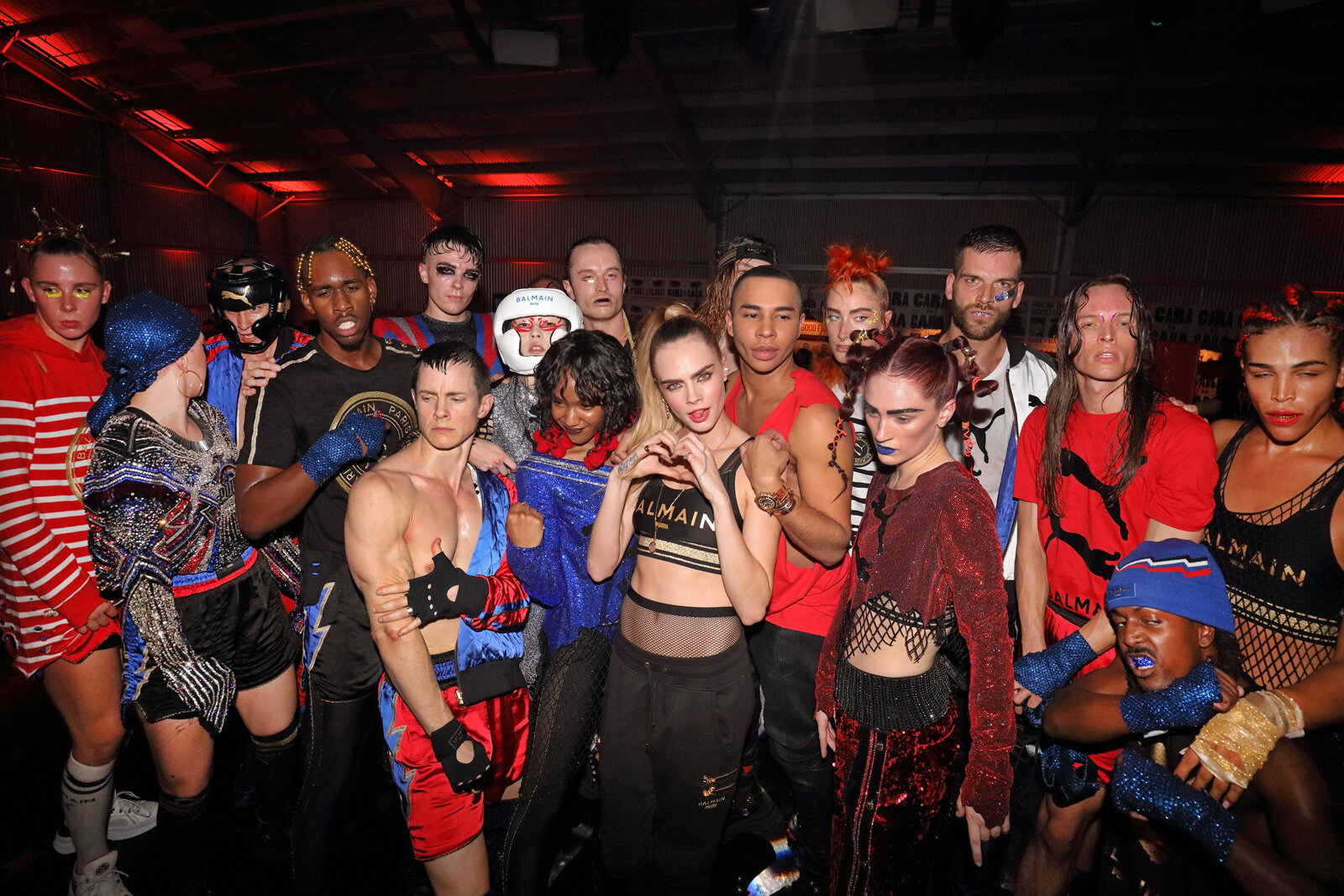text by Summer Bowie
photographs by Angel Origgi
James Baldwin once wrote, “People are trapped in history and history is trapped in them.” For rising choreographer and dancer Jay Carlon, the history and the colonial turmoils of the Filipinx experience is as heavy as a gunny sack of rice. As part of the REDCAT NOW Festival, Carlon presented his tender and prescient performance, Novena, at the CalArts Theater in Downtown Los Angeles with singer and sound artist Micaela Tobin. Historically, Novena—from the Latin word for nine—is a multi-day devotional ritual for grieving and healing, a transmutational practice of turning suffering into acceptance. Over the course of Carlon’s performance, this metamorphosis is slow, quiet and beautiful, like a lepidoptera emerging from a cocoon, body first, then legs, then wings, then flying into the unknown. Novena starts with the backstage wide open, lights on, fluorescent, exposed, the theater as a naked object. The first thing you recognize is someone riding an industrial floor polisher, the hooks, the ladders, the wires behind the stage symbolically exposed. A nod to the invisible workers, the culturally vanished. Carlon, in just a pair of boxing shorts, emerges with a sack of rice as Tobin gives her somber soprano chorus.
Shapes are shifting constantly before our eyes while our hero navigates the theater from stage, to catwalk, through the audience and back. His sack of rice at times resembles the ashes of an ancestor, exacting its weight on his shoulders with the entitlement of an exhausted elder. We are in the first stage of grief, penitent with the carriage of both our shame and pleasure simultaneously. In this state of self-flagellation one can imagine the superimposition of the stigmata and the ease of its colonial transmutation. He crawls on hands and knees, his lower back arched and buckling from the onus of inherited trauma. Transitioning into the second stage of grief, we dispose of Rudyard Kipling and his White Man’s Burden. A form of deliverance is attained in the realization that the savior we were awaiting is itself a false idol. The sack rolls effortlessly into his arms, held gingerly like an infant as he presses his cheek to it in a low squat. For a moment the putrefactive qualities of ash are indiscernible from the potential energy of harvested grain. He approaches a punching bag that has been sitting solitary at the center of the stage, waiting patiently to be filled. In our third stage, we discover that we are not empty vessels, and so begins the process of transference. The punching bag is at first filled one cup measure at a time like a loved one initially interred by a single fistfull of dirt. In an act of total unburdening, the remaining content of our sack is hoisted on one shoulder and emptied into the punching bag. The sack itself folded triangular like the folded American flag that drapes a soldier’s casket and is bequeathed to the next of kin after burial.
Once filled, our punching bag is lifted off the ground, suspended by a heavy metal chain that our boxer hoists link-by-link, a repetition of prayer with a unique gesture of devotion committed to each and every bead of the rosary. This first prayer is one for the preparation of battle that is to come in stage V. The hands are ceremoniously wrapped and the bag spins like a pendulum. In a cycle of seductive Stockholm Syndrome dispelled by unforeseen acts of triumph, our warrior battles the true replacement theory behind white supremacy. It’s the one that bred the mestizos as a genocidal act against the indigenous populations of the islands. It’s the one that motivated US Army Officer “Howling Jake” Smith to order his soldiers to “kill everyone over the age of ten" and make the island of Samar "a howling wilderness." It’s the one that replaced 70% of the archipelago’s rainforests with a denuded wasteland in service and literal support of the American and Japanese architecture of the 20th century. This is also the 1521 Battle of Mactan, where Ferdinand Magellan was felled by a poisoned arrow to his unarmed thigh and an eventual stabbing to his other thigh with a kampilan. This is the battle that delayed Spanish colonialism by 44 years. This is 500 years of fighting for sovereignty and forgiving those who conformed as an act of survival. Punches are thrown, the bag is tossed, dodged, and left alone to submit itself to the forces of gravity. A prayer marks the sixth stage of grief and it is extended to family and institution alike. They are the sacrifices that are the subject of this seance.
The chain is pulled tighter and the bag is lifted higher. Carlon hangs from a wrist leash attached to his sacrificial urn, tips of toes dragging along the floor beneath. The crucifixion of stage VII pulls our hero into a transcendent flight, spinning like a centrifuge of cultural distillation. Finally ready to be atoned, he returns to earth with feet firmly planted below the bag. He tears open a hole in the bottom of his vessel and stands, head back and chest lifted high in acceptance of his baptism. The punching bag becomes like an hourglass keeping the time of history’s ravages, the rice like infinity spilling onto the stage, another metamorphosis. He renews his sense of faith, trust, and love in his eighth stage of grief so that he can form a bridge to his ancestors in the ninth. A shower of rice pours down on Carlon as he kneels in solemn submission. His cleansing is scored by Micaela Tobin’s deconstructed reprise of “Sa Ugoy ng Duyan”, a Filipino lullaby sung in Tagalog that is as familiar as the national anthem. Lying supine in his growing mound of rice, Carlon offers his own song, this one a contemporary Visayan ballad called “Nalimot Ka Ba” about betrayal and loss of faith in the one that you love. It is a clarion call to his elders. Perhaps if we can share our grief in voice and gesture, we might enrich the detritus of a battle-scarred terrain with the nutrients necessary to support future generations. It is a prayer that they might one day be unburdened by the bondage of this shared history.

